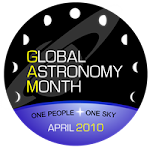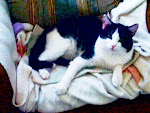Hitchin' a Ride
by
Vanity Fare
1970
A thumb goes up, a car goes by
It's nearly 1 a.m. and here am I
Hitchin' a ride, hitchin' a ride
Gotta get me home by the morning light
I got no fare to ride a train
I'm nearly drowin' in the pouring rain
Hitchin' a ride, hitchin' a ride
Gotta get me home to my baby's side
Ride, ride, ride, hitchin' a ride
Ride, ride, ride, hitchin' a ride
Long distance call I got today
She sounded lonely so I'm on my way
Hitchin' a ride, hitchin' a ride
Gotta get me home, keep her satisfied
instrumental break
Ride, ride, ride, hitchin' a ride
Ride, ride, ride, hitchin' a ride
A thumb goes up, a car goes by
Oh, won't somebody stop and help a guy?
Hitchin' a ride, hitchin' a ride
Been away too long from my baby's side
Ride, ride, ride, hitchin' a ride
Ride, ride, ride, hitchin' a ride
Ride, ride, ride, hitchin' a ride
Ride, ride, ride, hitchin' a ride
Ride, ride
Ride, ride
Ride, ride
Ride, ride
... [fade]
"The Space Shuttle Program’s Oddest Passengers"
by
Lisa Grossman
July 7th, 2011
Wired
With the final space shuttle scheduled to launch July 8 carrying an iPhone and a mutant strain of salmonella, we're taking a look at some of the strangest things that have ridden along with the shuttle astronauts into space.
Over the last 30 years and 134 missions, the shuttle has helped launch three great observatories -- Hubble, the Compton Gamma Ray Observatory and the Chandra X-Ray Observatory, missions to study Venus, Jupiter and the sun, and more than 350 astronauts.
But with its promise of easy transport into a low gravity environment, the shuttle has also taken some truly weird stuff into space. When Atlantis takes off for the last time, it will carry an iPhone and a mutant strain of salmonella. The scientific value of forcing bees to build hives or fish to swim in zero-g is still up for debate, but we have to admit it probably wouldn't have happened without the shuttle.
Here are some of our favorite critters that the shuttle gave a shot at space.
Frogs
Female frogs flew aboard Endeavour in September 1992 to see how weightlessness changes the way tadpoles grow. Half the frog eggs laid on the shuttle developed in microgravity, and half in a centrifuge that simulated normal gravity.
All the eggs developed into normal-looking tadpoles. But after returning to Earth, tadpoles raised in microgravity apparently drowned. Raised without a sense of up and down, they couldn't find the surface of the water in order to take their first breaths.
Squirrel Monkeys
Two squirrel monkeys, unimaginatively named No. 3165 and No. 384-80, flew on Challenger in May 1985 to see how space changed their eating habits. The monkeys grew sleepy and lost their appetites, much like human astronauts who have trouble adjusting to space.
Those monkeys came in the middle of a long line of simian astronauts. This little guy, a squirrel monkey named Baker, flew on a Jupiter rocket in May, 1959.
Sea Urchin Sperm
NASA swears up and down that no humans have ever had sex in space. But an experiment on the shuttle Atlantis in 1997 checked out how fast sperm swim in zero G, just in case. Sea urchin sperm, it turns out, swim a lot faster in space than on Earth.
See-Through Fish
The first vertebrates to successfully mate in space were small transparent medaka fish named Genki, Cosmo, Miki and Yume. The fishy astronauts rode into space on the shuttle Columbia July 1994, and played out a sordid drama of love and competition that ultimately led to the birth of dozens of healthy baby fish. The researchers hoped that their experiments could help develop fish farms on future human outposts in space.
Gypsy Moth Eggs
Some experiments on sex in space were aimed at keeping new life from starting. Infant gypsy moths, whose caterpillars are the scourge of hardwood trees in the eastern United States, flew on the shuttle Endeavour in October 1994. The trip in space shortened the moths' development cycle and left them sterile.
Worms
Petri dishes full of tiny nematodes emerged alive from the wreckage of the space shuttle Columbia after it disintegrated on reentry in 2003. The worms were being flown to test a synthetic nutrient solution, which apparently worked: The critters cycled through four or five generations in the three months between the accident in February and their recovery in late April.
Honeybees
In one of the earliest life-in-microgravity experiments, the shuttle Challenger lifted off in 1984 with more than 3,000 caged honeybees on board. By the end of the seven-day mission, the bees had completely adjusted to the lack of gravity, and built honeycombs just as thick and geometrically interesting as their counterparts on the ground.
Jellyfish
The shuttle Columbia carried 2,478 jellyfish polyps into space in June 1991 as part of the first mission dedicated solely to life science experiments. During the nine-day mission, the polyps grew into the next life stage, called ephyrae, which could swim and pulse around tiny vials of seawater. The jellyfish born in space could swim in space, but jellyfish born on Earth had trouble telling up from down.
Rats
Most of the microgravity experiments on the shuttle were performed on lab rats. Rats born in microgravity have no sense of up and down, a 1998 Columbia flight showed. Rats with broken bones heal more slowly in low gravity, and their skeletal muscles shrink. Baby rats that grew up in zero G even had underdeveloped regions of their brains, similar to what happens to animals with a central nervous system disease.
Squid
The last flight of the shuttle Endeavour carried a bobtail squid into space to study the bacteria that live on its surface. Bacteria tend to get more vicious after a trip in space -- in 2007, Salmonella bacteria were three times more likely to kill their host mice after flying on the shuttle. But squid and their bacteria have a mutually beneficial relationship. Researchers want to see if a spell in microgravity makes good bacteria turn bad.





























!["Coupling" 1976 [Gum-bichromate]](http://2.bp.blogspot.com/_IoU3bEFUwWc/S69lnr9G6AI/AAAAAAAAH58/O40Gg-G6rKk/S150/COUPLING+3.jpg)







No comments:
Post a Comment